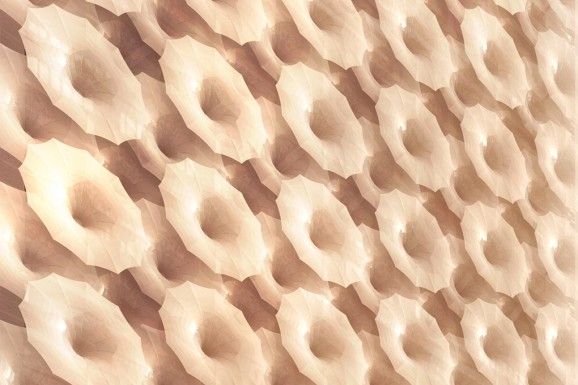Umbrellas To Help Shield Skyscraper From Sun
This article is more than 2 years old
 Remember the London skyscraper that got so hot in the sun that it started melting cars? Clearly that was a major design flaw, but suffice it to say that these tall buildings take in a lot of sunlight and can heat up fast. New York architecture firm REX has come up with an ingenious way to solve this problem, while also designing a skyscraper that makes a statement. Their secret? Umbrellas.
Remember the London skyscraper that got so hot in the sun that it started melting cars? Clearly that was a major design flaw, but suffice it to say that these tall buildings take in a lot of sunlight and can heat up fast. New York architecture firm REX has come up with an ingenious way to solve this problem, while also designing a skyscraper that makes a statement. Their secret? Umbrellas.
REX designed a pair of towers as the headquarters of “two sister Middle Eastern media companies” whose names and locations are being kept confidential. The idea is to reference Arabic architecture for all the elements a media company needs, including studios and office and broadcast facilities. But the two tall, thin buildings are covered in windows, offering stellar views but not a whole lot of shade. So the architects tackled this problem the way that people on the street during a sunny day often do.
 When employed, a seris of retractable shades intersect to create a huge window cover. The umbrellas have twelve sides and a traditional umbrella-like curve. When the pieces overlap they resemble Mashrabiya, a kind of latticework or paneling often found in Arabic designs. Only one side of each building needs shading at a time, so as morning becomes afternoon the shades retract on the eastern side of the building and extend on the western side, which would only take approximately a minute.
When employed, a seris of retractable shades intersect to create a huge window cover. The umbrellas have twelve sides and a traditional umbrella-like curve. When the pieces overlap they resemble Mashrabiya, a kind of latticework or paneling often found in Arabic designs. Only one side of each building needs shading at a time, so as morning becomes afternoon the shades retract on the eastern side of the building and extend on the western side, which would only take approximately a minute.
The eastern side of the building also features LEDs that can transform both buildings intos massive media screen, allowing the company to broadcast images and information far and wide. Eat your heart out, Times Square.
 You have to wonder who the first person at REX was to suggest umbrellas. It sounds silly, right? Maybe they really did see someone walking down the street shielding off the rays, or maybe it started as a joke and became a so-crazy-it-just-might-work moment. Or maybe they drew inspiration from the umbrella skyscraper designed to help protect and regenerate the polar ice caps.
You have to wonder who the first person at REX was to suggest umbrellas. It sounds silly, right? Maybe they really did see someone walking down the street shielding off the rays, or maybe it started as a joke and became a so-crazy-it-just-might-work moment. Or maybe they drew inspiration from the umbrella skyscraper designed to help protect and regenerate the polar ice caps.
Regardless, the marriage of simplicity and complexity, with a nod to the traditional architecture of the region, is pretty awesome. My question is what happens if it rains?












